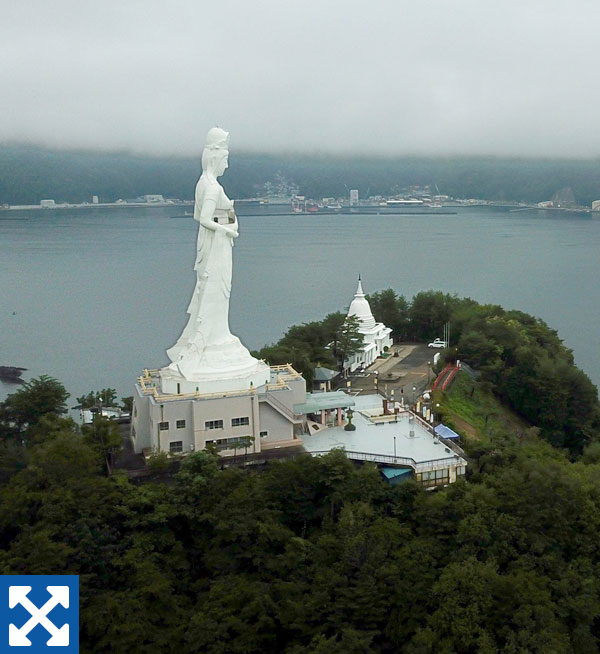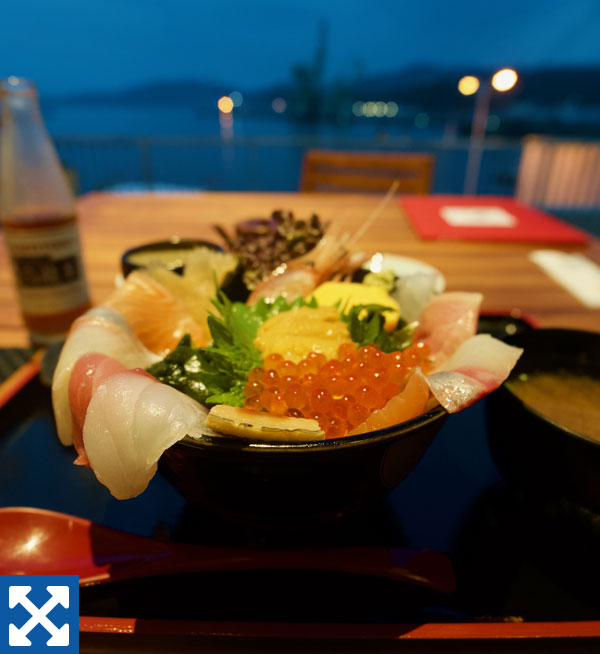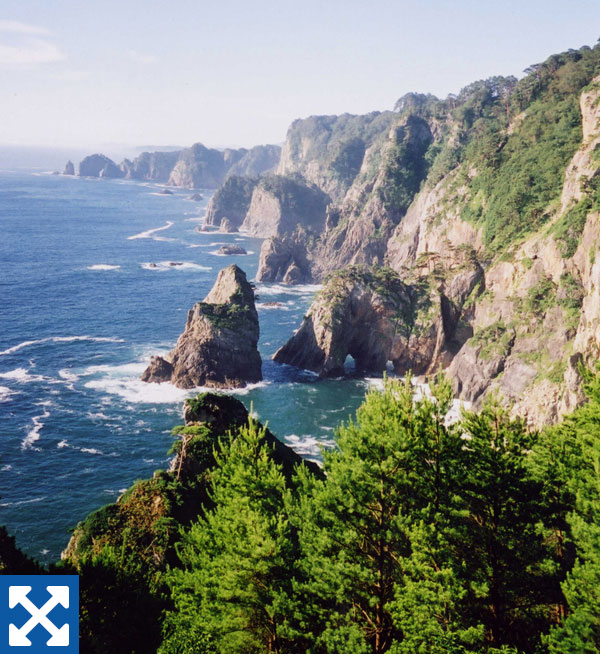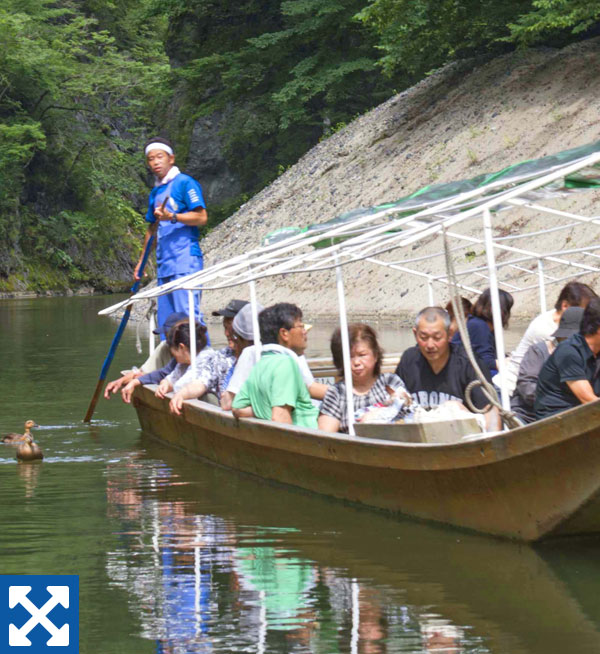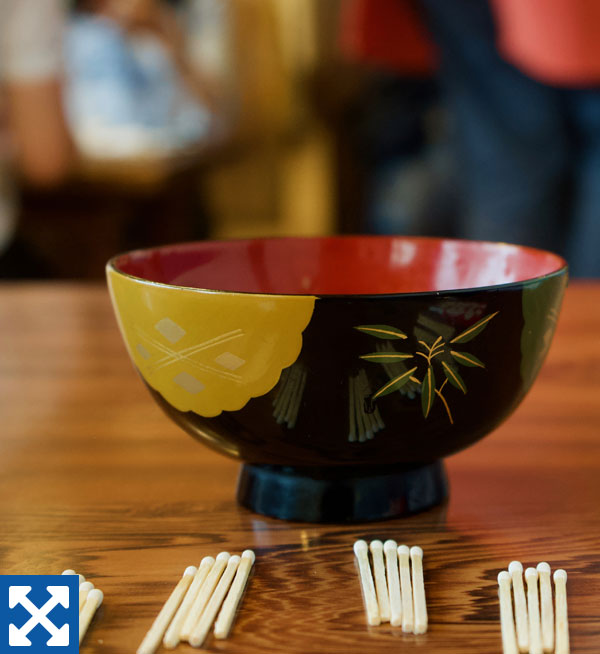Counting down to the Rugby World Cup 2019 … in Japan!
LIFE
A weekend in Kamaishi and Iwate
Educate yourself in natural disasterGreener grass: The Kamaishi Unosumai Memorial Stadium was built on the site of an elementary school destroyed by the 2011 earthquake and tsunami and will host the Rugby World Cup from September 2019. OSCAR BOYD
The Iwate coast is still in recovery, but don’t let that discourage you
OSCAR BOYD
Staff writer
Of all the host venues of the Rugby World Cup, there are none with as tragic a recent past as the city of Kamaishi in Iwate Prefecture.
In 2011, the Great East Japan Earthquake and subsequent tsunami damaged and destroyed much of the Tohoku coast on which Kamaishi is situated, killing an estimated 20,000 in the region. Along the coast of Iwate Prefecture, reconstruction efforts are still very much evident, and it is impossible to visit the area without acknowledging, with some emotion, the effects of the combined disasters.
With that somber reminder, it is still possible to find special pockets worth visiting, including some of the reconstruction efforts and memorials to the earthquake. Don’t expect easy, or particularly relaxing, travels in the region, but with consideration for the locals and the area’s recovery, it is a unique part of Japan to visit.
This itinerary covers the interior regions of the prefecture as well as the coast. Although most of the locations are accessible by public transport, this itinerary is structured around having access to a car.
Friday
A prayer for safety — afternoon
Kamaishi is a steel-producing hub and was the site of Japan’s first Western-style blast furnace. The Kamaishi City Iron and Steel History Museum (Odairacho 3-12-7, Kamaishi) offers a more detailed history, but start your trip with a view over Kamaishi and the bay from Kamaishi Daikannon temple (Odairacho 3-9-1, Kamaishi), where there is a 48.5-meter-tall statue of Kannon, the Buddhist goddess of mercy.
Built on the Kamasaki Peninsula to the south of the city, the statue looks out to sea, wishing a safe voyage and a bountiful catch to Kamaishi’s fisherman. Pay ¥500 to climb the statue for the best view of the bay.
Remembering the earthquake — afternoon
From Daikannon, head north to the Unosumai district of Kamaishi. Seventy percent of the houses in the area were destroyed by the 2011 tsunami and over 580 people lost their lives here, but it is the site of the newly built Kamaishi Unosumai Memorial Stadium (Unosumaicho 18-5-1, Kamaishi), which will host two games for the Rugby World Cup.
The stadium is built on the former site of an elementary and junior high school, on a strip of land next to the estuary of the Unosumai River and behind a vast sea wall — again newly built. Across the road from the stadium is Kamaishi Inori no Park (Dai 16 Chiwari-71-2, Unosumaicho, Kamaishi), a memorial site to those who lost their lives to the earthquake.
New restaurants, old favorites — dinner
Uogashi Terrace opened in April 2019 as a harborside development in central Kamaishi, and features four new restaurants and cafes. For dinner, stop at Shogoru (Uogashi 3-3, Kamaishi), which has a diverse menu of seafood dishes. The special don (rice bowl) features high-quality cuts of sashimi from the nearby fish market, and a healthy serving of uni (sea urchin), one of the region’s specialities.
Closer to the center of town, visit the local izakaya taverns such as Isaribi (Omachi 1-9-5, Kamaishi), or Mami or Bec’k in the Kamariba bar and restaurant hub (Omachi 1-3-9, Kamaishi), for lighter snacks and a good selection of regionally produced sake.
Pure Land: The dramatic coastline of Jodogahama Beach in the city of Miyako is said to resemble Buddhist paradise. OSCAR BOYD
Saturday
Rock, salt and pine — morning
Heading north out of Kamaishi, the star attraction of the city of Miyako is Jodogahama Beach (Hitachihamacho 32, Miyako). It takes its name from jōdo (the Buddhist Pure Land), which the rocky, pine-covered coastal landscape is said to resemble.
From the small harbor to the south of the beach, you can board a fishing boat to take a tour of the shoreline with the accurately named Blue Cave Cruise company (¥1,500 per person). The tours run primarily in Japanese, but some of the guides also speak a little English. Over the course of 20 minutes, they’ll take you inside the “blue cave” and explain its formation, and also point out various other landmarks along the Jodogahama coastline. Mind the thieving seagulls, known in Japanese as umineko (sea cats).
Snacks and drinks can be had at the Jodogahama Rest House, reconstructed since the tsunami, and situated just opposite the rocky beach.
Missing stories — late morning
Just north of Miyako is Taro, another fishing community devastated by the earthquake. Here, the local government has preserved the six-story Taro Kanko Hotel (Nohara 80, Taro, Miyako), the bottom two floors of which were swept away by the tsunami, leaving just the steel girders. Japanese-language tours are available by reservation through the Miyako Tourism and Cultural Exchange Association.
From here, walk through the construction site of the new Taro seawall, which will be 17 meters at its highest point when completed. Though striking, the walls have a prison-of-our-own-making feel and will have you questioning whether this is the future of living by the coast in a world of rising sea levels. If it all gets a bit existential, stop for a coffee at Suica cafe, a small wooden hut just down the road from the hotel.
High table — lunch
Perched on a cliff in the north of Iwate Prefecture is L’Aureole Tanohata (Aketo 309-5, Tanohata, Shimohei-gun), run by chef Katsuyasu Ito, who serves French cuisine based on local ingredients. On clear days, the restaurant has views of the Sanriku coastline below. A great spot for a scenic lunch.
Quite the drop — afternoon
Over 200 meters tall at their apex, the Kitayamazaki Cliffs (Kitayama 129-10, Tanohata, Shimohei-gun) are magnificent. A path runs from the visitor center between three observation platforms at different heights on the cliff face. The first platform sits at the top of the cliffs, the second midway down, and the third at the base. It’s a trek down 736 steep steps to get to the third platform, but worth it.
If you have the time, consider a boat tour of the cliffs from the model fishing village of Tsukue Banyangun in nearby Tanohata (Tsukue 142-3, Tanohata, Shimohei-gun; reservations must be made a day in advance; ¥3,000 per person). Two fishermen offer tours in small fishing boats known as sappa, and will take you around and through the cliffs’ bluffs and archways. The village also has a scuba diving shop, and a building offering various fishing village-themed workshops.
The great Iwate rift — late afternoon
Ryusendo Cave (Aza-Kannari 1-1, Iwaizumi, Iwaizumicho, Shimohei-gun; ¥1,000) is a detour off the coastal road, but one that is highly recommended.
This vast limestone cave is a rift in the mountain through which fresh spring water bubbles up at a speed of 1,500 liters per second. The walking route takes the best part of an hour and runs on a walkway above three cavernous lakes, the deepest of which is 98 meters. The water is exceptionally clear, and hanging lanterns have been placed in the depths to illuminate the natural features of the lakes.
Even if it’s warm outside, the cave is usually somewhere around the 10 degree Celsius mark, so bring an extra layer. Warm up with a tea or coffee at the teahouse across the river near the cave’s entrance, which also serves a variety of different food options.
Cool and clear: An underwater lantern illuminates a deep-water lake inside Ryusendo Cave, near Iwaizumi. OSCAR BOYD
Sunday
One in a hundred — morning
If you’re not yet sick of boat cruises, board a guided punt tour of one of the Showa Era’s (1926-89) “100 Landscapes of Japan”: Geibikei Gorge (Nagasaka 467, Higashiyamacho, Ichinoseki). These 90-minute round trip tours take you between the steep walls of the gorge along a 2-kilometer stretch of the Satetsu River.
Buddhist heritage — late morning
In the 12th century, the Hiraizumi area in the south of Iwate Prefecture was chosen as the northern seat of Japan’s most powerful clan, the Fujiwaras. It became a cultural capital that is said to have rivaled Kyoto at the time, and has received UNESCO Heritage status. Two temples in particular are worth visiting, as preeminent examples of early Buddhist design.
Motsuji (Osawa 58, Hiraizumi; ¥500) is famous for its Pure Land garden and lake — the only intact example of such Heian Period (794-1185) design — which together attempt to recreate a vision of Buddhist paradise. Bicycles can be rented from outside the temple to nip around Hiraizumi.
Chusonji (Koromonoseki 202, Hiraizumi; ¥800 to enter Konjikido) comprises a greater number of temple buildings, built up a hill in a dense forest. The final, and grandest, of these temple buildings is the Konjikido, which contains a golden hall that is one of two buildings to survive from the original Chusonji complex, and a mausoleum for the Fujiwaras.
At the base of Chusonji is The Brewers Hiraizumi (Koromonoseki 34-13, Hiraizumi), which serves coffee and cake, and is well stocked with Iwate Kura beer brewed in the nearby town of Ichinoseki.
Nonstop noodles — lunch
Some foods can be recommended for the name alone, but wanko soba also doubles as a 400-year-old regional speciality. From Hiraizumi, head north and stop in the center of Hanamaki to visit Kajiya (Azumacho 2-19, Hanamaki; wanko soba from ¥3,500).
Order the wanko soba and you’ll be (force) fed a never ending series of small bowls of soba noodles in quick succession with a variety of condiments. Each bowl is counted with a matchstick, and most people get through around 30 bowls. The record for men at Kajiya is 177 bowls, while the record for women is 145. Thirty-two is all this writer could manage.
This is the 11th installment of a monthly series that will introduce each of the 12 host cities of the 2019 Rugby World Cup.
To read more weekend guides to the host cities of the Rugby World Cup 2019, visit features.japantimes.co.

